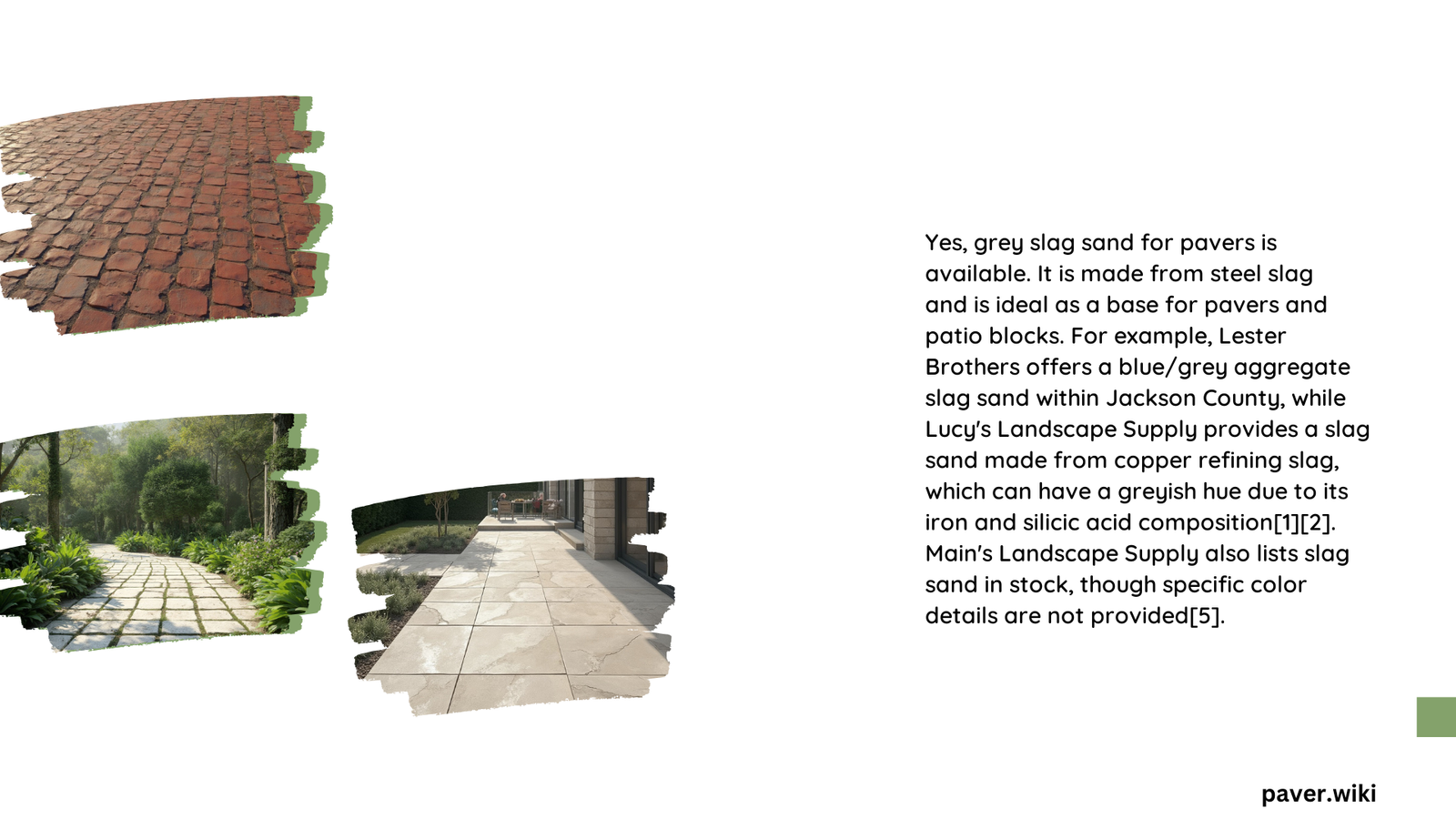Grey slag sand for pavers is not a common industry term, but grey polymeric sand is widely used for paver applications. This specialized sand is designed to fill joints between pavers, providing stability and preventing weed growth. While not made from slag, grey polymeric sand offers similar benefits in terms of durability and aesthetics. It’s composed of fine sand particles mixed with polymeric additives that harden when exposed to water, creating a strong bond between pavers.
What is Grey Polymeric Sand for Pavers?
Grey polymeric sand is a specialized product designed for use with pavers. It consists of fine sand particles mixed with polymeric additives that harden when exposed to water. This creates a strong, durable bond between pavers, helping to stabilize the surface and prevent weed growth.
What are the Key Components of Grey Polymeric Sand?
- Fine sand particles
- Polymeric additives
- Color pigments (for grey appearance)
Why is Grey Polymeric Sand Used Instead of Slag Sand?

While slag sand is not commonly used for pavers, grey polymeric sand offers several advantages:
- Better joint stabilization
- Weed prevention
- Erosion resistance
- Aesthetic appeal
How Does Grey Polymeric Sand Compare to Traditional Sand?
| Feature | Grey Polymeric Sand | Traditional Sand |
|---|---|---|
| Joint Stability | High | Low |
| Weed Resistance | Excellent | Poor |
| Water Resistance | Good | Poor |
| Cost | Higher initial cost | Lower initial cost |
| Longevity | Longer-lasting | Requires frequent replacement |
What are the Benefits of Using Grey Polymeric Sand for Pavers?
- Enhanced paver stability
- Reduced weed growth
- Improved water drainage
- Aesthetic uniformity
- Longer-lasting results
How is Grey Polymeric Sand Applied to Pavers?
- Ensure pavers are clean and dry
- Spread sand over the surface
- Sweep sand into joints
- Compact sand using a plate compactor
- Remove excess sand
- Activate polymers with water
What are the Top Brands of Grey Polymeric Sand for Pavers?
- Techniseal EZ Sand
- Alliance Gator MAXX G2
- Polybind Sand
How Much Does Grey Polymeric Sand Cost?
The cost of grey polymeric sand can vary depending on the brand and quantity purchased. On average, prices range from $15 to $30 for a 50-pound bag.
Where Can You Buy Grey Polymeric Sand for Pavers?
Grey polymeric sand is widely available at:
- Home improvement stores (e.g., Home Depot, Lowe’s)
- Landscape supply centers
- Online retailers (e.g., Amazon, Wayfair)
What are the Environmental Considerations of Using Grey Polymeric Sand?
While grey polymeric sand offers several benefits, it’s important to consider its environmental impact:
- Reduced sand migration into stormwater systems
- Decreased need for frequent replacements
- Potential concerns about polymer additives in soil
How Long Does Grey Polymeric Sand Last?
When properly installed, grey polymeric sand can last for several years. Factors affecting longevity include:
- Quality of installation
- Amount of foot traffic
- Weather conditions
- Maintenance practices
What Maintenance is Required for Grey Polymeric Sand?
To maintain grey polymeric sand:
- Regularly sweep the paver surface
- Avoid power washing at high pressures
- Reapply sand as needed (typically every 2-3 years)
- Address any areas of settlement promptly
Can Grey Polymeric Sand be Used for All Types of Pavers?
Grey polymeric sand is suitable for most paver types, including:
- Concrete pavers
- Natural stone pavers
- Brick pavers
- Porcelain pavers
However, always check manufacturer recommendations for compatibility.
What are the Alternatives to Grey Polymeric Sand for Pavers?
If grey polymeric sand is not suitable for your project, consider these alternatives:
- Traditional jointing sand
- Crushed stone screenings
- Permeable joint materials
- Mortar-based jointing compounds
How Does Climate Affect the Performance of Grey Polymeric Sand?
Climate can impact the performance of grey polymeric sand in several ways:
- Freeze-thaw cycles may cause expansion and contraction
- Excessive heat can soften the polymers
- Heavy rainfall may wash out sand before it sets properly
Consider local climate conditions when choosing and installing grey polymeric sand.
In conclusion, while grey slag sand for pavers is not a common industry term, grey polymeric sand offers similar benefits and is widely available for paver applications. Its durability, weed resistance, and aesthetic appeal make it a popular choice for both residential and commercial paver projects.
References:
1. Alliance Gator MAXX G2
2. Polybind Sand
3. Techniseal EZ Sand
